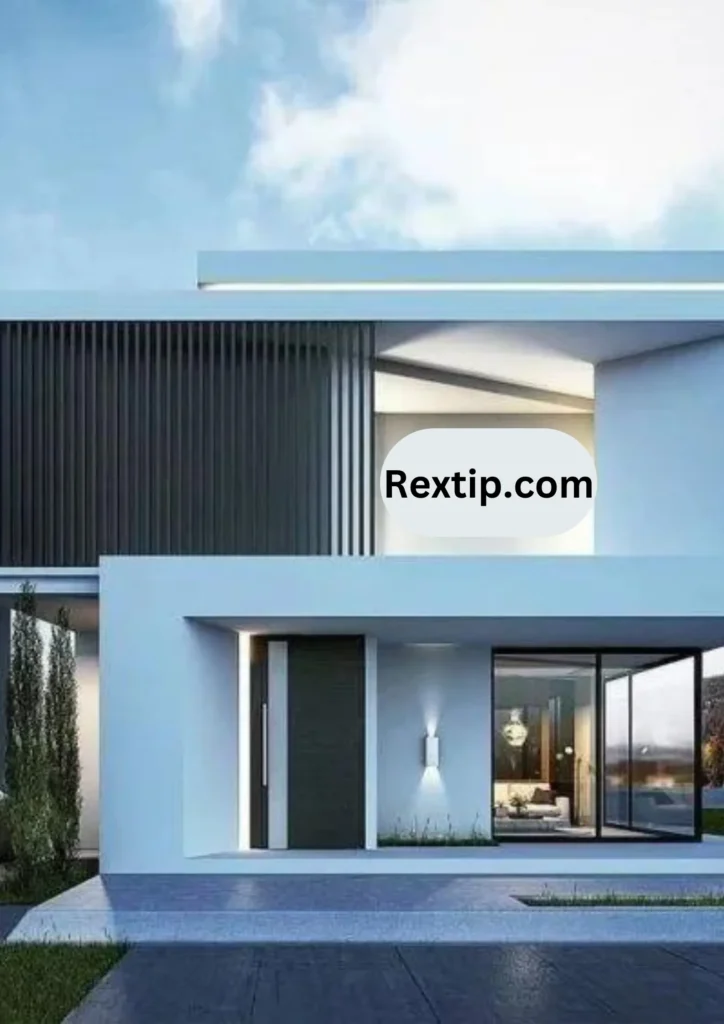The popularity of modern home facades and architecture is rising. One of the features that homeowners and purchasers most frequently desire for both the interior and exterior of their homes is a modern house exterior with simple, clean lines.
1. Floating Home
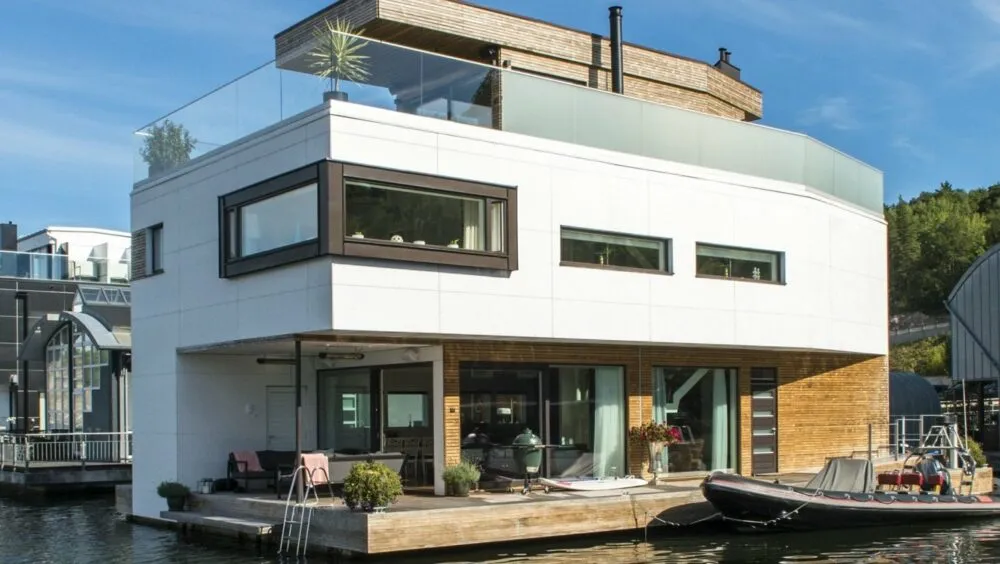
This stunning three-story floating home blends classic modern design with a deep connection to nature. Created by floating construction experts Timo Urala Design, Bluet Ltd, and Marinetek Group, the house features a striking exterior of glass, white fiber cement, and Kebony wood. Lead Designer Timo Urala shared, “Building a floating house that is both well-designed and visually appealing depends on using top-quality materials. Kebony proved to be excellent—strong and durable. I’m so impressed that I’m now adding a Kebony rooftop terrace to my own home.”
2. Valley Living
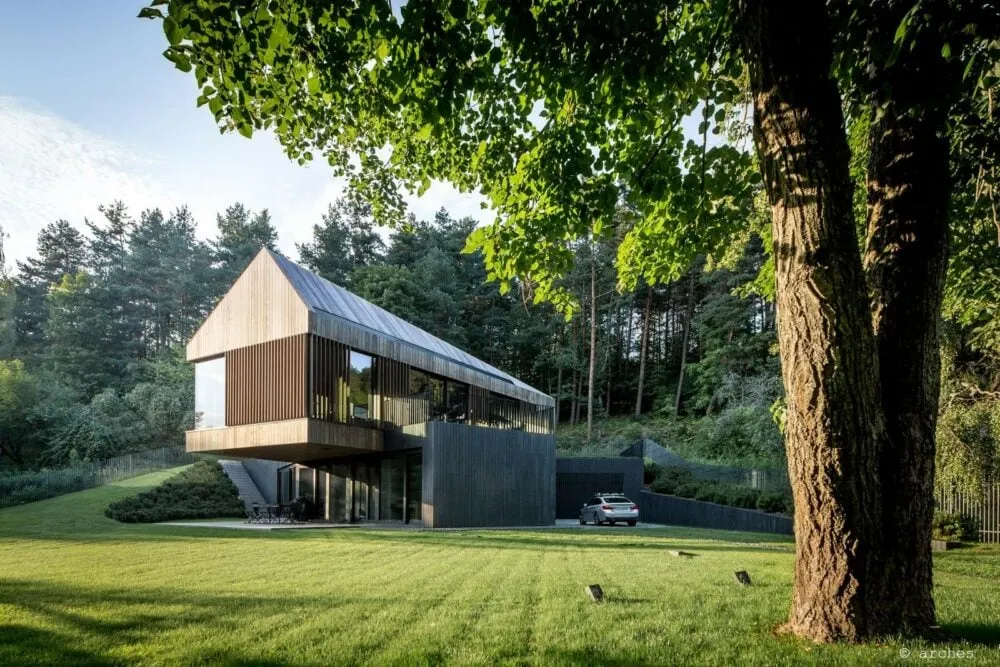
Valley Villa is a distinctive family home located near Vilnius, Lithuania. Designed to blend seamlessly with the surrounding hills and pine forests, the house features an asymmetrical pitched roof and sustainable Kebony wood cladding. Arūnas Liola, an architect at the award-winning firm Arches in Vilnius, noted, “Each time we work with Kebony, we discover new creative possibilities. The potential is limitless.” This exceptional home won the top prize at the 2016 Contemporary Lithuanian Architecture Exhibition.
3. Outdoor Living

This modern house boldly stands out among the Spanish-revival stucco homes in the suburbs of Palo Alto, California. Shaped like a triangular wedge, it features the owner’s main residence on the taller side and a smaller second home on the shorter side. This design allows the owner to downsize while still providing space for extended family in the original house. The architects at Fernau & Hartman described their wedge design as a “metaphorical bridge” linking opposites like landscape and architecture, light and shade, and the contrast between the warmth of wood and the coolness of steel and concrete. The beautiful, sustainable Kebony wood cladding was a perfect fit for this energy-efficient home, which received the AIA Montana Citation Award in 2015.
4. Beach Houses inspired by Sand Dunes

Building in sandy areas can be tough, but these beach homes really nail the coastal vibe. They feature large plate glass walls that showcase stunning ocean views, and their driftwood-like exteriors blend seamlessly with the natural sand dunes. Designed with minimal environmental impact in mind, they use Kebony wood—natural and sustainable—for the siding, roofs, and decks, which adds to their charm. Crafted by WAM Design, these beach houses in Camber Sands, East Sussex, have won several awards, including the 2016 Surface Design Award and the 2017 RICS South East Residential Award.
5. Victorian Cottage Modernization
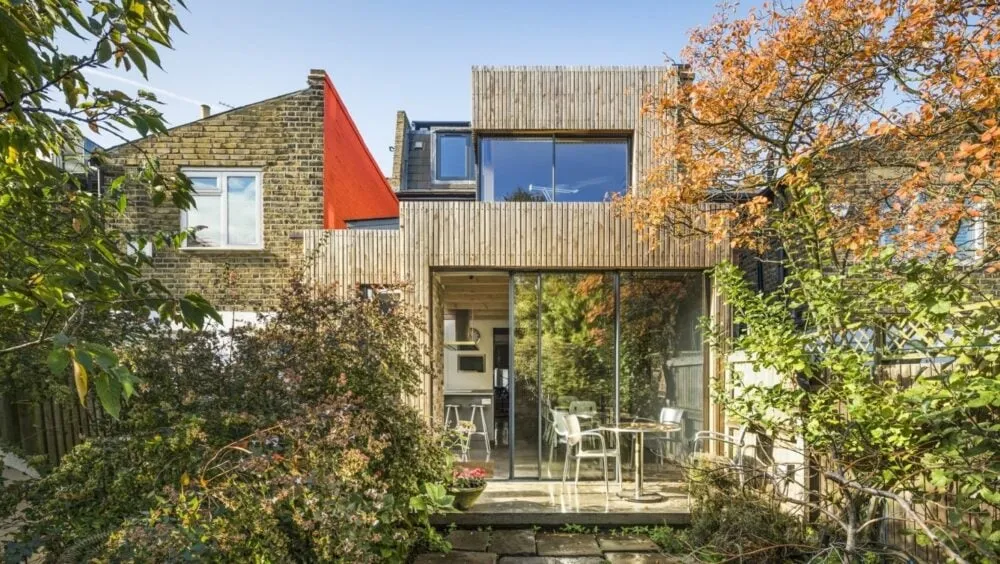
This Victorian terrace house in Wandsworth faced all the usual issues of its 19th-century design. Waind Gohil + Potter Architects (WG+P) turned it into a modern London home by incorporating natural materials and maximizing light. They opted for Kebony cladding because it’s durable and tough. Project Architect Ciara McInerney mentioned, “Kebony was the ideal choice and was installed quickly. The end result perfectly links the garden with the house. WG+P frequently works with timber and will definitely consider using Kebony again in the future.”
6. Cabin in the Wild
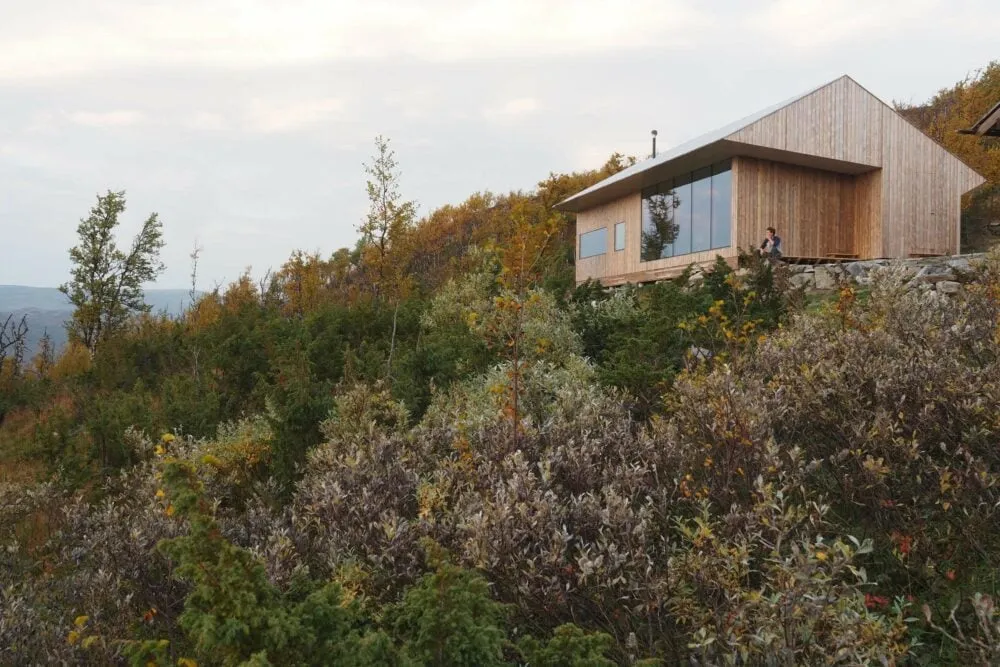
Nestled in Norway’s largest national park, this cabin, designed by Jon Danielsen Aarhus, offers breathtaking views of its stunning landscape. It’s built with eco-friendly materials like insulating and solar-protected glass and sustainable Kebony cladding. The cabin has a versatile floor plan with two rooms, accommodating up to 13 guests. The exterior cladding was selected for its durability and sustainability. Over time, the wood will naturally weather to a silver-gray, adding to its charm and helping the cabin blend seamlessly with its environment.
7. Pre-weathered Wooden Cladding

This modern Oak Hill house is located next to an old Victorian mansion block in Hampstead, North London. It has large glass panels that give stunning views of the lush surroundings. Claridge Architects chose a special pre-weathered Kebony cladding from Shou Sugi Ban to match the garden’s suburban vibe. Karl Harrison, the founder of Shou Sugi Ban, said, “Kebony is one of the most durable woods we’ve worked with. The charred finish highlights the wood’s detailed grain, which makes it a favorite among our customers.”
8. Don’t Move, Improve

The owners of this ground-floor flat in South London wanted more space, so they expanded into the garden with a new extension. They used charred Kebony wood with the Shou Sugi Ban technique for a modern look. Architects David Stanley and Romy Grabosch designed it to fit perfectly with the garden and make the home more spacious and family-friendly. The result is a charming, garden-focused home that lets them stay in their current place instead of moving to a more expensive one.
9. Cabin Blending into Natural Rock
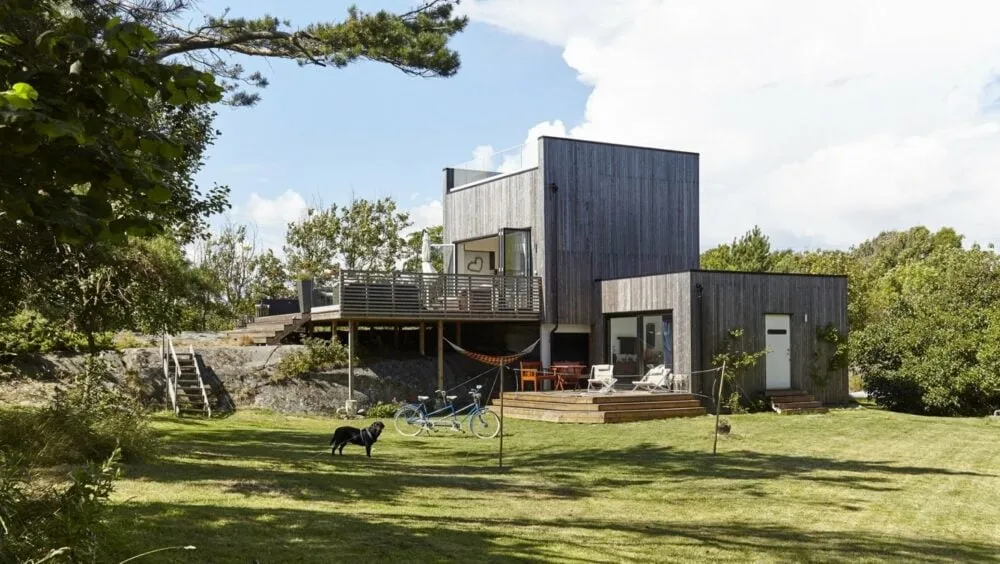
This modern cabin on a North Sea island near southern Norway was designed to be unique compared to the traditional cabins nearby, while still fitting in perfectly with its natural surroundings. Architect Pernilla Johansson and the owners chose Kebony cladding because it’s environmentally friendly, looks great, and can handle tough weather. Over time, the Kebony wood turns a silver-grey color that matches the natural rock of the cabin’s base. The owners also liked that Kebony doesn’t need any maintenance, which allows them more time to enjoy family activities and relax.
10. Lateral Style

This award-winning design by Pitman Tozer used sustainable Kebony Clear cladding to give an 1850s Victorian house a fresh, modern makeover. The renovation turned it into a bright and spacious five-bedroom family home. It added a roof terrace, revamped the south-facing garden, and included a stylish new annex. Created for a repeat client, the project maximizes the site’s potential. The materials chosen for the rear extension and annex blend beautifully with the original house, achieving a cohesive and elegant look.
11. Zero Waste Design
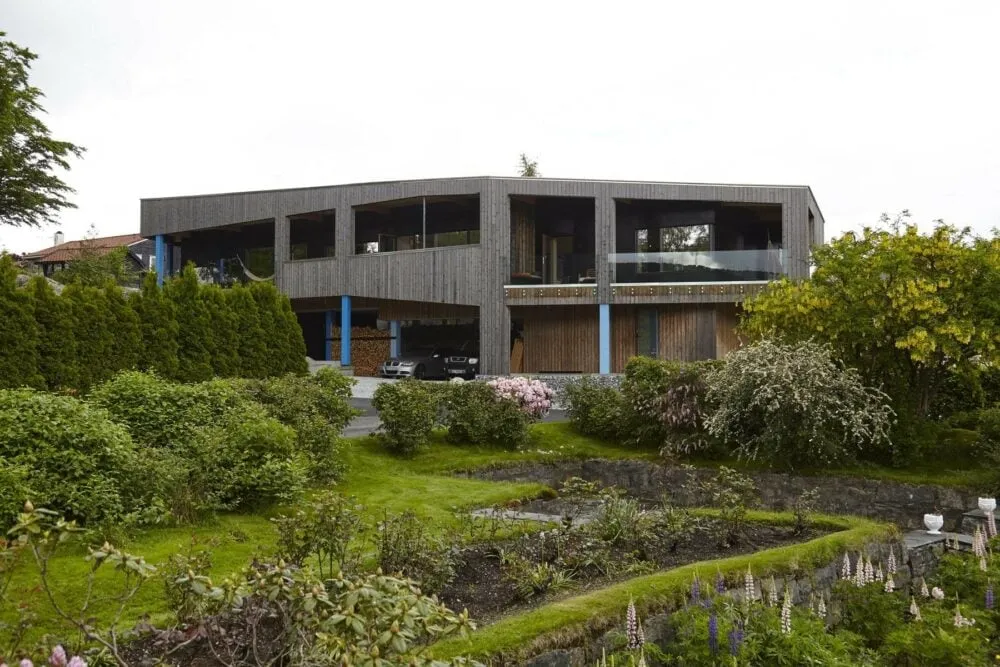
Wooden homes are uncommon in Norway because of the ongoing risk of fire. Historically, buildings were made from fire-resistant materials like concrete until safer and more sustainable wood options became available. This self-built house, designed and built by architect Henning Kongshavn Frøndsdal, features over 200 tonnes of wood and includes more than 9,000 meters of Kebony cladding. Every piece of wood was put to use, with leftover bits and cuts skillfully integrated into the final design, ensuring that nothing was wasted.
12. Circular Style

Villa Circuitus is Sweden’s first circular passive house. It’s covered in sustainable Kebony wood and was designed to meet high environmental standards for both its design and construction materials. Certified passive house experts Simone Kreutzer and Tommy Wesslund, known for their expertise in energy and ventilation, were key to the project. They worked with Nina Sandahl from SAJT Arkitektstudio to design this unique private home. Kreutzer shared, “We’re passionate about creating sustainable homes, so we made sure every part of the house was responsibly sourced. The solar-paneled balustrade, recycled insulation, and distinctive Kebony cladding all contribute to our goal of a truly eco-friendly home.”
13. Submerging in Nature
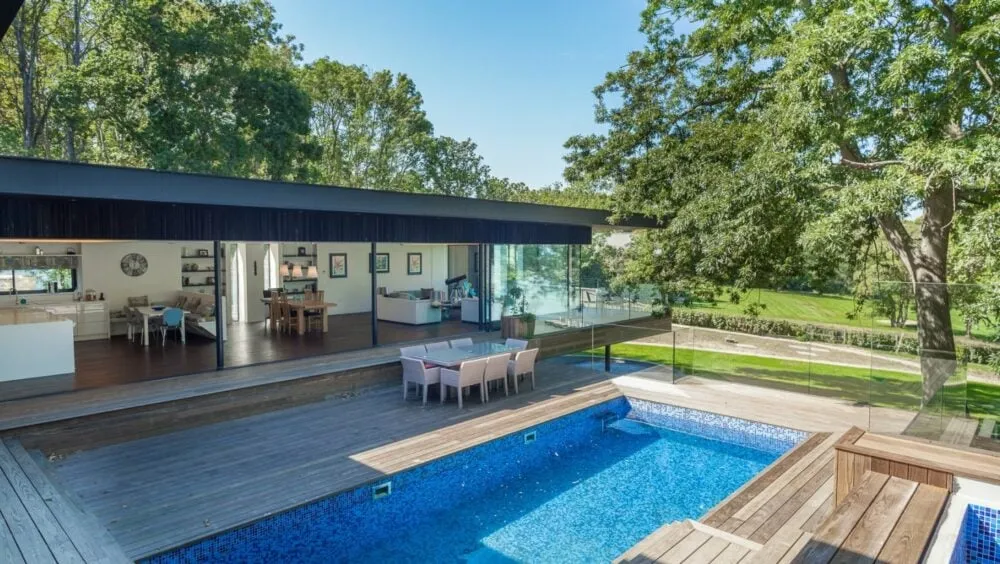
This beautiful family home on the Isle of Wight’s south coast was featured on the UK Channel 4 show Grand Designs. Inspired by nature, international modernism, and the simple, open-plan design of Mies van der Rohe’s famous Farnsworth House, it seamlessly blends into its natural setting, thanks to the use of eco-friendly Kebony wood for the decking and cladding. Architect Lincoln Miles shared, “We carefully selected materials that were both sustainable and long-lasting. We went with Kebony for its natural appearance and low maintenance. I’m excited to work with Kebony again in future projects.”
14. Modern Extension to Rustic Origin

This old farmhouse from the 1800s, originally built with a gable roof, was updated by LINK Architects. The makeover kept its classic style but added a modern, simple design that highlights the surrounding landscape. They used a lot of glass and aluminum in the renovation. The roof and outer walls of the new section were covered in Kebony wood, which is eco-friendly and keeps the farmhouse’s traditional look. Martin Ebert from LINK Arkitektur said it was an exciting project because it blended old Scandinavian design with modern architecture. The use of Kebony wood helps preserve traditional architecture without harming the environment.
15. Dare to Be Square

This house is one of several large homes on Hurst Avenue in London’s Highgate neighborhood. It features eco-friendly Kebony Clear wood on the outside, giving the house a modern look. The project also showcases the skills of Bliss, a London-based design and development company. The 4,500-square-foot house has a split-level layout and includes an indoor pool. Daniel Broch, the founder of Bliss, is a big fan of Kebony products. He said his goal is to work with partners who are passionate and energetic about creating great products, and he believes Kebony is one of them because the product both looks and performs amazingly.
16. Nontraditional Shapes

House Garborgsveg stands out in a traditional Norwegian neighborhood in Trondheim. The architectural firm TYIN Tegnestue Architects added extensions to both floors of this two-story home. The architects, Yashar Hanstad and Andreas Grøntvedt Gjertsen, said the design is simple but pushes the limits of modern building, which is a key idea in all their projects. For the outside of the house, they used Kebony Character, an eco-friendly wood that’s durable enough to withstand Norway’s tough winters. This was their third project using this sustainable material.
17. Townhouse Living Reinvented

Havnevigen Townhouses is a community of 49 homes in Copenhagen, Denmark, designed by Arkitema Architecture, one of the biggest architectural firms in Scandinavia. The design connects the modern Islands Brygge district with the historic Nokken area. The two- and three-story townhouses are built with light-colored soft brick and have large windows framed in durable, eco-friendly Kebony wood. Kebony wood is also used for the privacy walls between the patios. Over time, this wood will naturally turn a silver-gray color without needing maintenance.
18. Passive House Living

In 2015, a traditional 1930s Scandinavian Funkis-style house was updated to meet strict Passive House environmental standards. Lasse Haldrup Juul, the owner and architect from Kontur Architects, designed the renovation and chose Kebony Clear wood for the exterior. The wood’s flexibility allowed him to use leftover material to build eco-friendly plant boxes and other outdoor features. Juul has received lots of praise for the house. He said, “Wood has a special visual appeal, and Kebony lets us use it without harming the environment. Using Kebony changed the house’s look, giving it an impressive yet natural finish.”
19. Material Mix with Oversized Windows

This contemporary four-bedroom villa really stands out in its neighborhood, especially among the more traditional homes nearby. Designed by LOGG Arkitekter, it’s a perfect example of Scandinavian design. The exterior features stunning, eco-friendly Kebony Clear cladding, and huge glass panels provide incredible floor-to-ceiling views of downtown Oslo and the surrounding fjords. The villa’s unique T-shape, made up of two main blocks, gives it a distinctive and eye-catching look. This design not only adds to its visual appeal but also makes the most of natural light and views, perfectly combining modern style with practical functionality.
20. Modernized Edwardian Style

A unique Edwardian home in north Aberdeenshire, Scotland, has recently been updated with a sleek, modern extension. This new addition contrasts with the traditional granite of the original house by featuring durable Kebony cladding, which brings a touch of Scandinavian design. Mark Williams from HRI Architects in Inverness explained, “Materials need to withstand the harsh climate and endure over time. We use Kebony in many projects because it’s treated with a natural liquid that makes it strong enough to handle the tough Scottish weather.”
21. A Quiet Treehouse for the Garden
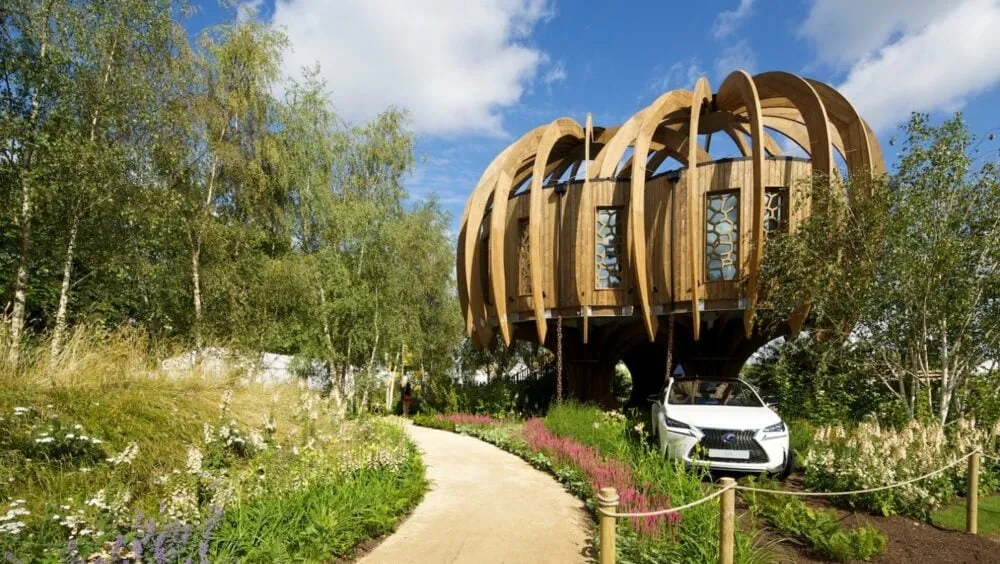
A distinctive Edwardian house in north Aberdeenshire, Scotland, has just been updated with a stylish, modern extension. This new part of the home contrasts sharply with the original house’s traditional granite, featuring durable Kebony cladding that adds a hint of Scandinavian design. Mark Williams from HRI Architects in Inverness noted, “The materials have to cope with the harsh climate and last over time. We use Kebony in many of our projects because it’s treated with a natural liquid that makes it tough enough for the challenging Scottish weather.”
22. Rainscreen Cladding
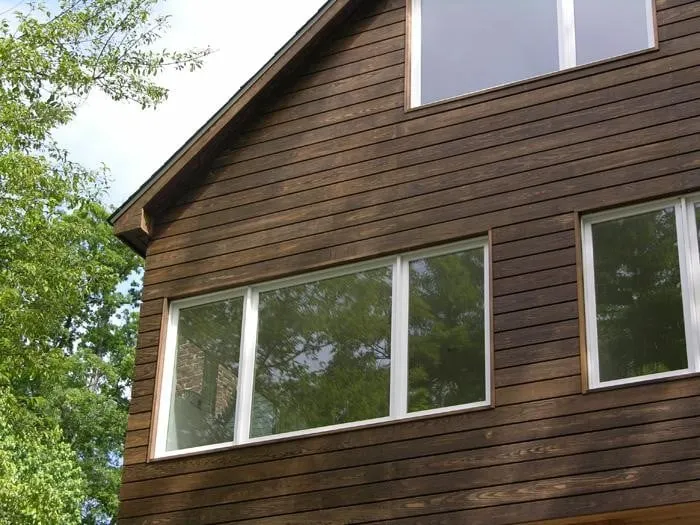
When a centuries-old home in the Chevy Chase neighborhood of Washington D.C. needed renovation and expansion, Jonathan Kuhn Architect selected sustainable Kebony wood for the exterior rainscreen cladding. This rainscreen system protects the old brick facade from harsh weather, and offers added benefits like improved insulation, energy efficiency, and an eco-friendly profile. “Kebony wood offered a level of craftsmanship that other wood siding couldn’t match,” said Kuhn. “It was easy to work with, allowing for precise detailing and assembly without requiring special equipment.”
23. Redesigned Sustainable Prefab Home

Originally a Norwegian catalog house, this prefabricated home from Norhus was put together in just nine months, even though they had to make significant changes to fit the plot. Owner Tone Bekkestad and her husband worked closely with the project architect, Solhaug Bolig, to pick the right materials and solutions for their home, aiming for low maintenance and eco-friendliness. “The wood is a deep brown right now,” Tone said, “but it will gradually turn a lovely silvery-grey on its own, so we won’t need to repaint or treat it.”
24. Closeness to Nature
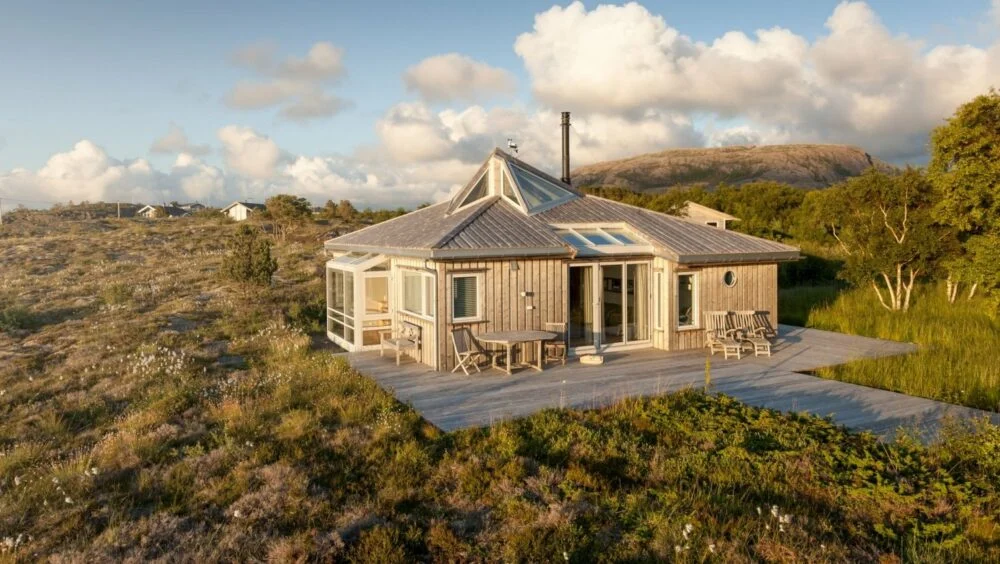
This amazing seaside home is on Lysøya, a small island in Norway, northeast of the mainland. The surrounding trees keep the house private from nearby properties while still offering stunning ocean views. The house is designed to highlight the flexibility of eco-friendly Kebony wood. The deck, cladding, and roof are all made from Kebony Character wood, chosen for its durability, sustainability, and low maintenance. Over time, the Kebony wood develops a natural silver-gray color that blends beautifully with the Nordic landscape.
25. Treat Yourself to Luxury
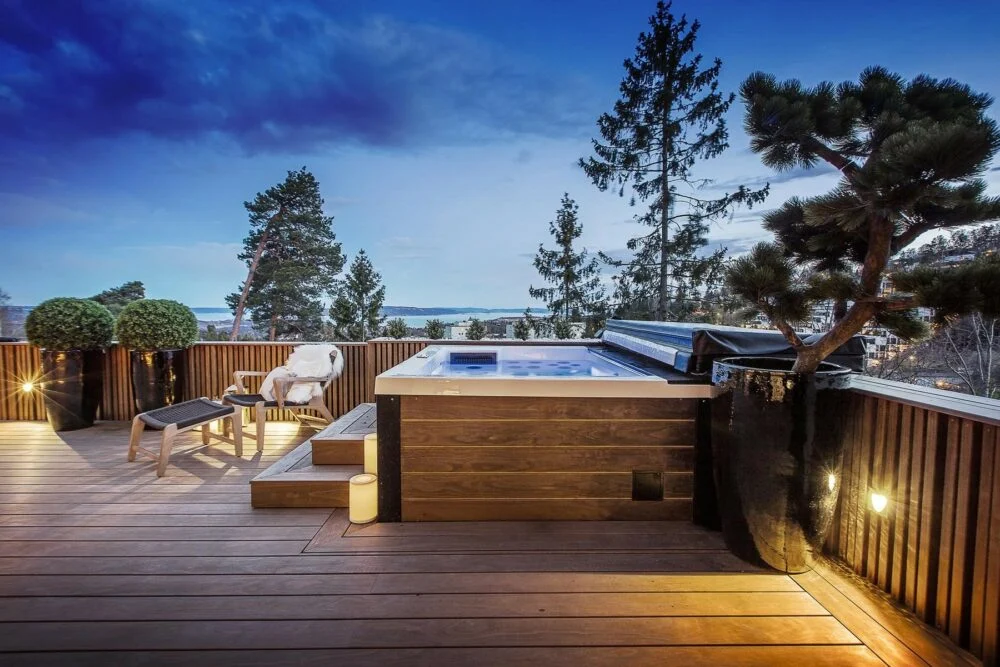
Even if you don’t have much space inside, you can still enjoy some luxuries. This rooftop apartment smartly uses its space with a southwest-facing terrace that has beautiful Kebony Clear decking. There’s also a hot tub on the terrace, made from the same material and built right into the railing. This setup saves space and adds a touch of elegance. The residents of this Norwegian home can relax inside or outside, soaking in the hot tub and taking in the amazing views. The combination of practical design and stylish features makes sure that luxury and comfort are always at hand.
